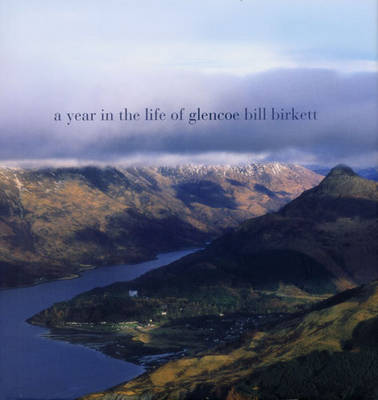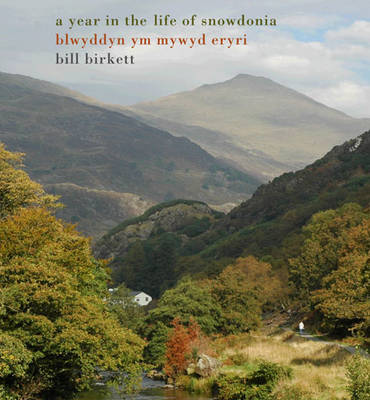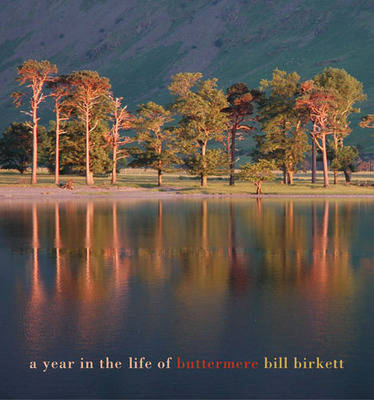A Year in the Life
3 total works
Enclosed by sweeping bastions of rock that stretch a thousand metres to touch the sky, the North West Highland's Glencoe plunges from the wilds of Rannoch Moor to the burial isles of Eilean Munde. Shaped by ancient volcanoes, Ice Age glaciers and the attrition of wind and rain, it is a raw landscape of awesome proportion - one of the most spectacular in Britain. Carrying on from his breathtaking "A Year in the Life of the Langdale Valleys", noted climber, photographer and writer Bill Birkett turns his attention to the seasonal changes in this most famous of mountain glens. The challenging heights, in the main protected and conserved by the National Trust for Scotland, are the province of the rock climber and mountaineer, while down below scattered farms and the little communities of Glencoe and Ballachuilish function through the extremes of the seasons as they have done since the Bronze Age. The magical rowans bear blossom, unfurl their leaves and hang red with berries before the deep savage snows of winter blanket all. Above, beyond the snow-capped peaks, the golden eagle rules the air. On the slopes, the red stag stamps his authority across the purple heather.
In this stunning photographic essay, Bill Birkett captures the heartbeat of the awesome highlands of Scotland.
In this stunning photographic essay, Bill Birkett captures the heartbeat of the awesome highlands of Scotland.
This is the seventh of Bill Birkett's prize-winning and widely praised photographic essays which portray, throughout the seasons, his love affair with the wildest and most impressive mountain areas of Britain. Snowdonia, the third largest National Park in Britain, is unsurpassed in its variety of landscape. It ranges through the high rugged mountains around Snowdon to the far-flung high groups of the Rhinogs, Arennigs and Arans, and the mighty Cadair Idris. It stretches some 85 kilometres - from Conwy and its magnificent castle in the north to Aberdovey and its Roman road in the south. Snowdonia attracts over 6 million visitors annually. A leading centre for all who love the natural world and a major recreational area for climbers and walkers, it is not a region of complete wildness: adding to its character are the 27,500 people who live and work there, in the heartland of Welsh-speaking Wales. Some 65 per cent of the inhabitants have Welsh as their first language, and have strong links with other peoples of the Atlantic coast, such as Cornwall, Brittany and the Basque region of Spain.
At 1,085 metres, Snowdon is the highest mountain in Wales and higher than any mountain in England; its evocative Welsh name Eryri means 'place of the eagles'. Along with some of the most dramatic and magnificent scenery in Britain, Eryri contains a huge variety of habitats for animals, birds and plants. Between the sea and the mountains the region has 37 kilometres of coastline, with beaches cut by deep estuaries. Above the coast, glacially carved valleys fed by mountain lakes and streams support the remnants of broad-leaved woodlands of oak, ash, rowan and hazel. There are more National Nature Reserves in Eryri than in any other National Park in Britain.
At 1,085 metres, Snowdon is the highest mountain in Wales and higher than any mountain in England; its evocative Welsh name Eryri means 'place of the eagles'. Along with some of the most dramatic and magnificent scenery in Britain, Eryri contains a huge variety of habitats for animals, birds and plants. Between the sea and the mountains the region has 37 kilometres of coastline, with beaches cut by deep estuaries. Above the coast, glacially carved valleys fed by mountain lakes and streams support the remnants of broad-leaved woodlands of oak, ash, rowan and hazel. There are more National Nature Reserves in Eryri than in any other National Park in Britain.
This photographic essay, the fourth Lake District volume in Bill Birkett's prize-winning and widely praised valley portraits, captures all the facets of the delightful Buttermere Valley throughout the seasons, from the ever-changing mood of its lakes and tarns to its inspirational high fells. The pure influences of lake and mountain are dominant, and the changing combinations of light magnify form and scale here as nowhere else. The narrow valley of Buttermere, the 'secret valley', lies squeezed deep in the mountains towards the north-west fringes of Cumbria. With its lakes - Buttermere, Crummock Water and Loweswater - and high surround of peaks it is rightly regarded as one of the most awe-inspiring and dramatic of the Lakeland dales. Steeped in myth and legend, protected by the high mountain passes of Honister, Newlands Hause and Whinlatter, it remains an intriguing oasis of quiet and calm. Its many fine waterfalls include Scale Force, which has the longest vertical drop in the region; there is wonderful walking over the tops and by the lake shore, and an array of magnificent crags invites climbers to seek their thrills and challenges.
Mary Robinson, the 'Maid of Buttermere' and reputedly the beauty of the late eighteenth century, may be long gone, but there is more than enough natural beauty on which to feast the eye. Of all the Lakeland places he knew so well, Buttermere was especially dear to the great fell-walker Alfred Wainwright: his ashes are scattered there, beside the shore of Innominate Tarn high on the rugged top of Haystacks, and he is commemorated in a plaque in the blood-red granite church of St James above Buttermere village.
Mary Robinson, the 'Maid of Buttermere' and reputedly the beauty of the late eighteenth century, may be long gone, but there is more than enough natural beauty on which to feast the eye. Of all the Lakeland places he knew so well, Buttermere was especially dear to the great fell-walker Alfred Wainwright: his ashes are scattered there, beside the shore of Innominate Tarn high on the rugged top of Haystacks, and he is commemorated in a plaque in the blood-red granite church of St James above Buttermere village.


